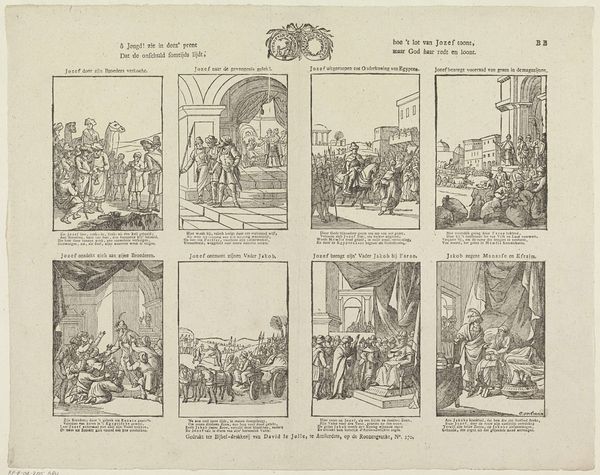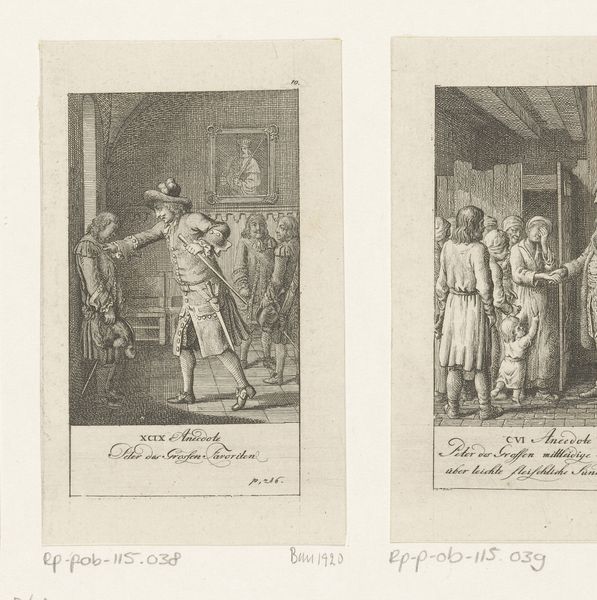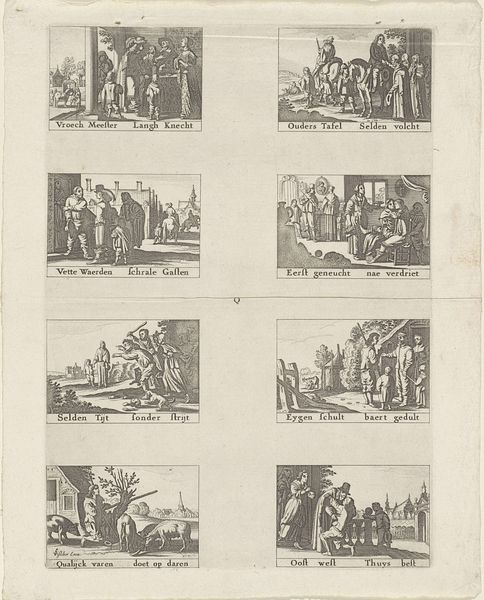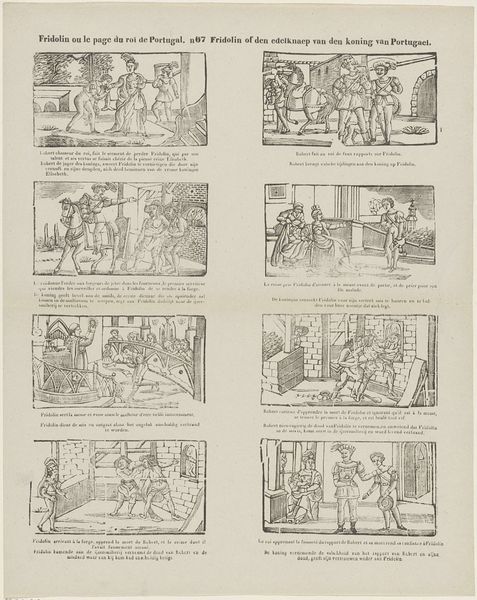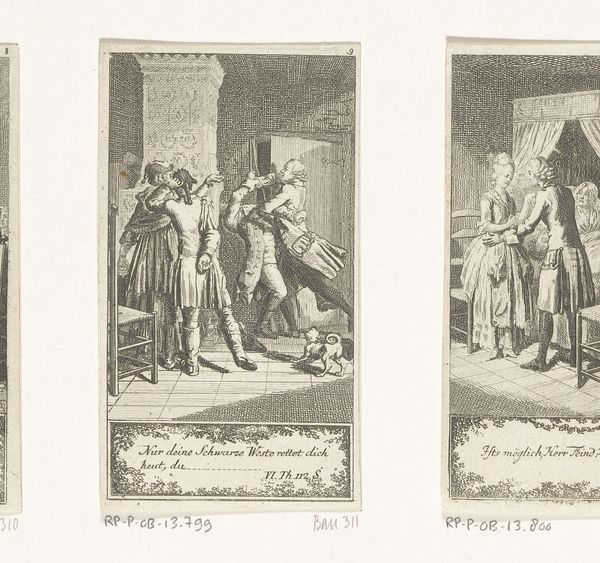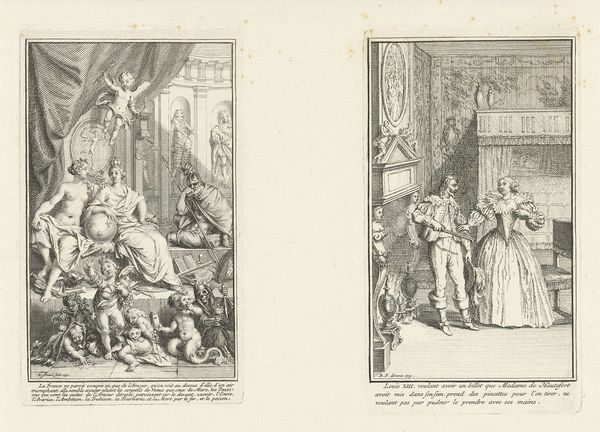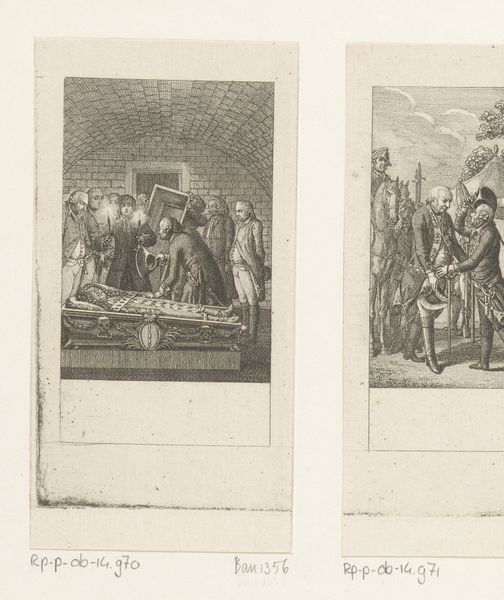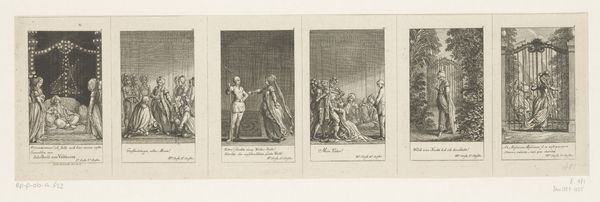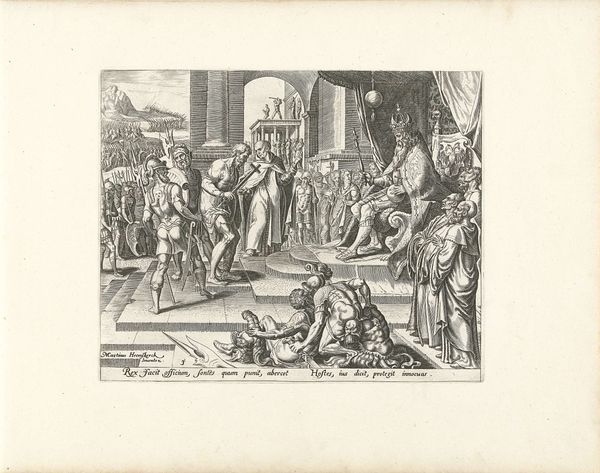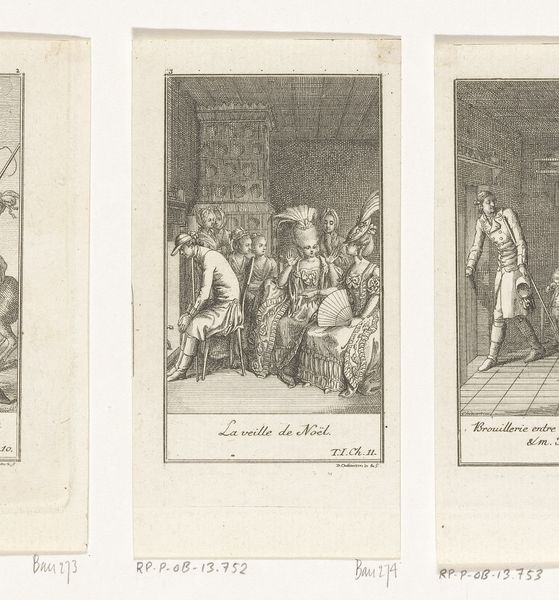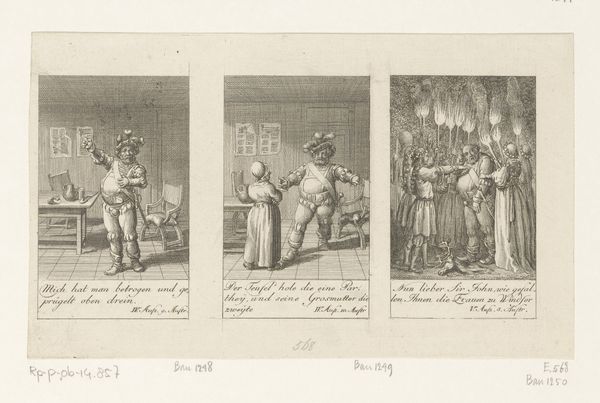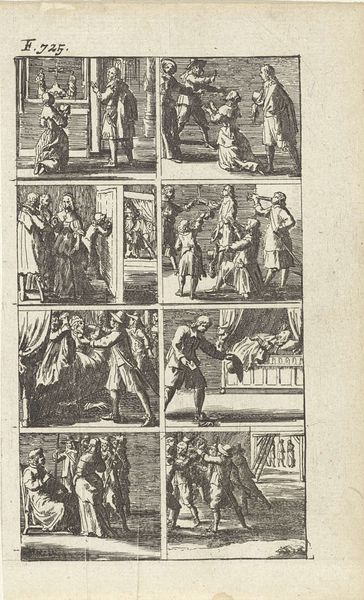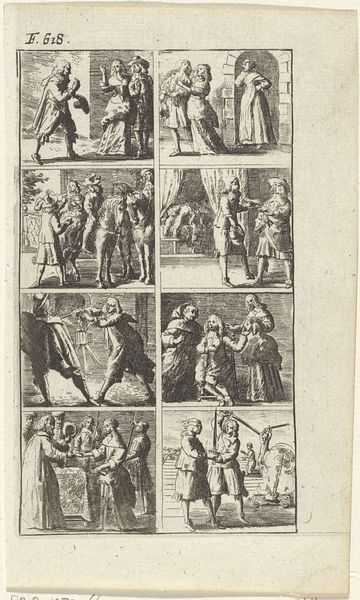
De eerste vier episoden uit de Rechtspraak van graaf Willem III 1600 - 1652
0:00
0:00
anonymous
Rijksmuseum
print, engraving
#
narrative-art
#
dutch-golden-age
# print
#
genre-painting
#
engraving
Dimensions: height 170 mm, width 251 mm
Copyright: Rijks Museum: Open Domain
Curator: This engraving, "De eerste vier episoden uit de Rechtspraak van graaf Willem III," was created between 1600 and 1652, by an anonymous artist, and it’s currently held at the Rijksmuseum. The material is print. Editor: Immediately, the grid format strikes me. It presents four distinct narratives, like chapters in a story. The monochrome palette creates a certain solemnity, wouldn’t you say? It feels very matter-of-fact. Curator: Precisely. Let’s examine that structure. The four panels offer a sequence of justice, revealing how wealth, power, and circumstance shaped legal proceedings of the period. The artist’s focus seems fixed on conveying social commentary. Editor: Focusing on individual forms within those panels. Note how the figures’ postures communicate so much about their relative positions in society, in contrast to the relatively less-expressive architectural lines which nevertheless communicate authority. Look at the downward glances! Curator: Good point. If we delve into the top-left episode, for instance, we witness figures of affluence negotiating an exchange, the figures’ garments alone speak volumes regarding economic status. That sense of lived-in authenticity is a key factor. Editor: And lower-right vignette? The meeting at the doorway—power about to ride away, both literally and figuratively, seated on that fine horse, ready to leave. Even if we don’t have full access to what any specific interaction represents in any of the individual moments, they are united, somehow. Curator: Certainly. Collectively, the print underscores inequalities prevalent within legal landscapes. Note the deliberate placement of scenes highlighting imbalances—each contributes to the wider socio-political critique embedded within this series. Editor: So in essence, this grid's design choice invites one to contemplate both the composition’s aesthetic arrangement AND the inequities woven into society during the Dutch Golden Age—a time frequently painted in the grand strokes of prosperity. The artist cleverly marries form and content. Curator: Indeed, seeing it all now makes that design even stronger. What first looked simplistic became evermore potent. Editor: I agree, seeing those inequalities represented in a visually interesting, and graphically unique, design feels, surprisingly relevant still.
Comments
No comments
Be the first to comment and join the conversation on the ultimate creative platform.
